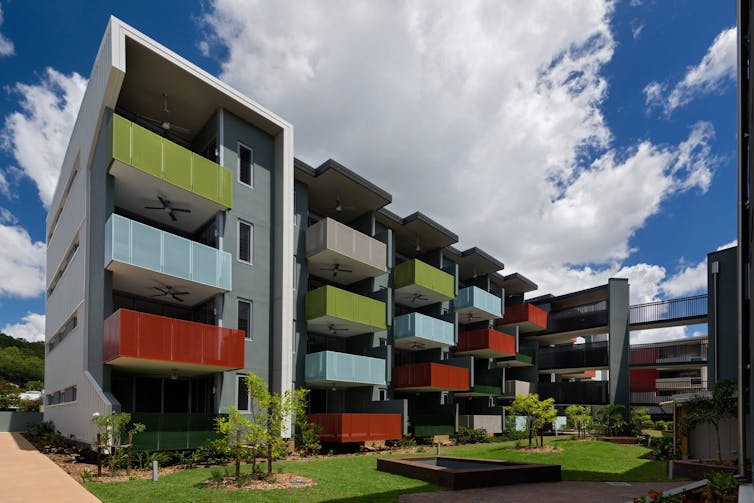by Fran Korten, Yes! magazine: https://www.yesmagazine.org/new-economy/a-boost-for-the-worker-owned-economy-20180925
 |
| Photo by Ian Spanier/Getty Images |
Business owners looking to sell their companies to their employees just got a helping hand from the federal government. It’s the first such measure that’s passed Congress in more than 20 years.
Tucked into the omnibus National Defense Authorization Act signed by President Trump in August 2018 was language directing the U.S. Small Business Administration to help retiring owners sell their businesses to their employees, either as a worker cooperative or as an Employee Stock Ownership Plan.
The measure was backed by an array of nonprofit advocates of employee ownership, including the ESOP Association, the National Urban League, the American Sustainable Business Council, and the U.S. Federation of Worker Cooperatives. According to Melissa Hoover of the nonprofit Democracy at Work Institute, it is the first federal legislation ever to explicitly name worker cooperatives as an SBA priority.
The help appears to be timely, as retirement looms for a “silver tsunami” of business owners. According to the Harvard Business Review, 2.3 million companies are owned by baby boomers, half of whom are expected to retire in the next 10 years. Those companies employ 25 million people.
As that wave of retirees breaks, business owners don’t have many options. Most do not have children who want to run the business, according toJoseph Blasi and Douglas Kruse, professors at the Rutgers School of Management and Labor Relations. Studies show that many will simply close up shop, with their employees losing their jobs. Some may sell to a competitor such as another local company, a larger publicly traded corporation, or a private equity fund—options that also can trigger job losses.
“That makes selling their businesses to the workers who helped create all the value in the first place one of the best options available,” Blasi and Kruse wrote in The Conversation. “It not only helps secure the owner’s retirement but also leaves behind a legacy in the local community.”
The SBA sets the legal standards for what qualifies as a small business, and the standard varies by industry.
The new federal law directs the SBA to use its nationwide network of nearly 1,000 Small Business Development Centers to educate owners about selling to their employees. One obstacle, however, is that owners commonly want or need an immediate cash payment, which employees can rarely afford.
The law addresses that problem by authorizing the SBA to use its 7(a) loan guarantees for such buyouts. The SBA does not make the loans, but its guarantees mean that intermediaries such as banks are much more willing to make the loans. For 2018, Congress authorized the SBA to guarantee up to $28.5 billion for those loans.
Hoover cautions, however, that despite the law and loan guarantee authorization, “we can’t assume employee ownership will be a priority for the SBA. We must help make it a priority. The legislation is well-written, so now our work is to support the implementation to make sure it meets our needs.”
In 2016, the Democracy at Work Institute convened a Workers to Owners collaborative to expand the number of providers assisting with employee-to-owner transitions. Hoover noted, “now the national network is well-positioned to coordinate efforts in implementing the new law.”
Marjorie Kelly of the nonprofit Democracy Collaborative has found that retiring owners are often concerned about their employees losing their jobs. She has cited Galfab, a company that makes waste-hauling equipment in rural Indiana, as an example of a company that made a successful transition to employee ownership.
“Taking care of all the employees was foremost in our mind,” CEO Jerry Samson said when he announced the sale of the company to his employees. Kelly said that Samson decided not to take the highest bid he received for the company because he didn’t want the company sold and moved to some other place, with all those people losing their jobs.
Employee ownership is viewed by many advocates as a fundamental building block for a just economy because workers can have a say in the company’s management and share in the benefits of its success. A growing body of data supports the advantages for workers. A study from the National Center for Employee Ownership reveals that in the last recession, employee owners were four times less likely to be laid off, have two and a half times more money in their retirement accounts, and receive 5 percent to 12 percent more in wages than those in comparable non-employee-owned companies.
That information, alongside a growing concern with economic inequality, is spurring bipartisan interest in employee ownership. U.S. Sen. Kirsten Gillibrand, (D-New York) who introduced the employee-ownership bill in the Senate, had three Republican and three Democratic co-sponsors.
“There’s a reason employee ownership has been favored by people as diverse as Ronald Reagan and Bernie Sanders,” Kelly said. “It works, both as a business proposition and as a pathway to a more democratic economy that works for everyone.”
The bipartisan enthusiasm is significant, Kelly said. “We have the opportunity to bend the curve of history. We can watch these 2 million baby boomer-owned businesses close or be absorbed by big companies, with the accompanying layoffs and job loss. Or we can have a major national commitment to moving these companies into employee ownership, reducing inequality, spreading asset ownership, and rebuilding the middle class.”
One form such a government commitment could take is a much larger loan-guarantee program for employee ownership, similar to federal home loan programs. This could double the number of employee owners in a decade, from 14 million today to 27 million.
“After World War II, we made a commitment to broad-based home ownership. We can now do the same for enterprise ownership,” Kelly said.







.jpg?t=1536349537739&width=340&name=IMG_0037%20(1).jpg)